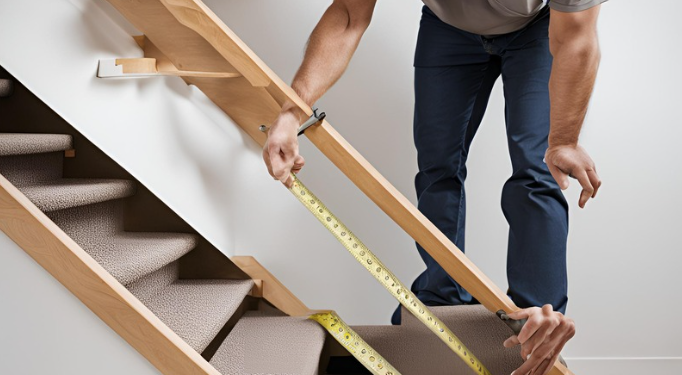
How to Install Carpet on Stairs: A Step-by-Step Guide
Installing carpet on stairs is a fantastic way to add comfort, safety, and style to your home. Whether you're a seasoned DIYer or a beginner, this guide will take you through the process step by step. Here’s everything you need to know about how to install carpet on stairs.

Tools and Materials You'll Need:
- Carpet
- Carpet underlay (optional)
- Carpet tacks or adhesive strips
- Carpet knife or utility knife
- Staple gun and staples
- Measuring tape
- Knee kicker
- Stair tool or bolster chisel
- Hammer and nails (if needed)
Step 1: Measure Your Stairs
Begin by measuring each stair individually. Staircases can vary in size, so it’s crucial to measure the width and depth of each tread and riser. Add a few extra centimetres to each measurement to ensure you have enough carpet to work with.
Step 2: Choose Your Carpet and Underlay
Select a carpet that suits your home's aesthetic and the level of foot traffic. A durable, low-pile carpet is often recommended for stairs due to its resilience. If you're using underlay, choose one that provides comfort without adding too much thickness.
Step 3: Prepare the Stairs
Make sure your stairs are clean, dry, and free of any debris. Remove any old carpet, tacks, or staples from previous installations. Check that the stairs are in good condition and repair any loose boards or squeaks.
Step 4: Cut the Carpet and Underlay
Cut the carpet into strips to fit each stair, leaving a few extra centimetres on each side. If using underlay, cut it to the same size as the tread and riser. It's best to cut all your pieces before starting the installation to ensure consistency.
Step 5: Attach the Underlay (if using)
Place the underlay on each tread and riser, securing it with staples or adhesive. Ensure it’s smooth and free of wrinkles, as these can affect the finish of your carpet.
Step 6: Install the Carpet
There are two common methods to install carpet on stairs: the waterfall method and the cap-and-band method.
Waterfall Method:
- Lay the carpet over the edge of the tread and down the riser in one continuous piece.
- Use a knee kicker to stretch the carpet tightly over the edge.
- Secure the carpet with staples or tacks at the back of the tread and at the base of the riser.
Cap-and-Band Method:
- Cut separate pieces for the tread and riser.
- Attach the riser piece first, ensuring it’s smooth and tightly secured.
- Then, place the tread piece, wrapping it over the edge and securing it underneath the nosing with staples or tacks.
Step 7: Secure the Edges
Use a stair tool or bolster chisel to press the carpet into the creases between the tread and riser. This ensures a tight fit and helps the carpet stay in place. Trim any excess carpet with a carpet knife for a neat finish.
Step 8: Finish the Installation
Once all the steps are carpeted, check for any loose areas and secure them as needed. Walk up and down the stairs to ensure the carpet feels secure and comfortable.
Final Tips:
Always work from the top of the staircase downwards to ensure the carpet stays in place as you work.
- Use a high-quality carpet adhesive for extra security, especially in high-traffic areas.
- If you’re unsure about any part of the process, consider hiring a professional to assist.
By following these steps, you can successfully install carpet on stairs, adding a touch of warmth and style to your home. With patience and the right tools, this DIY project can be both rewarding and cost-effective.







